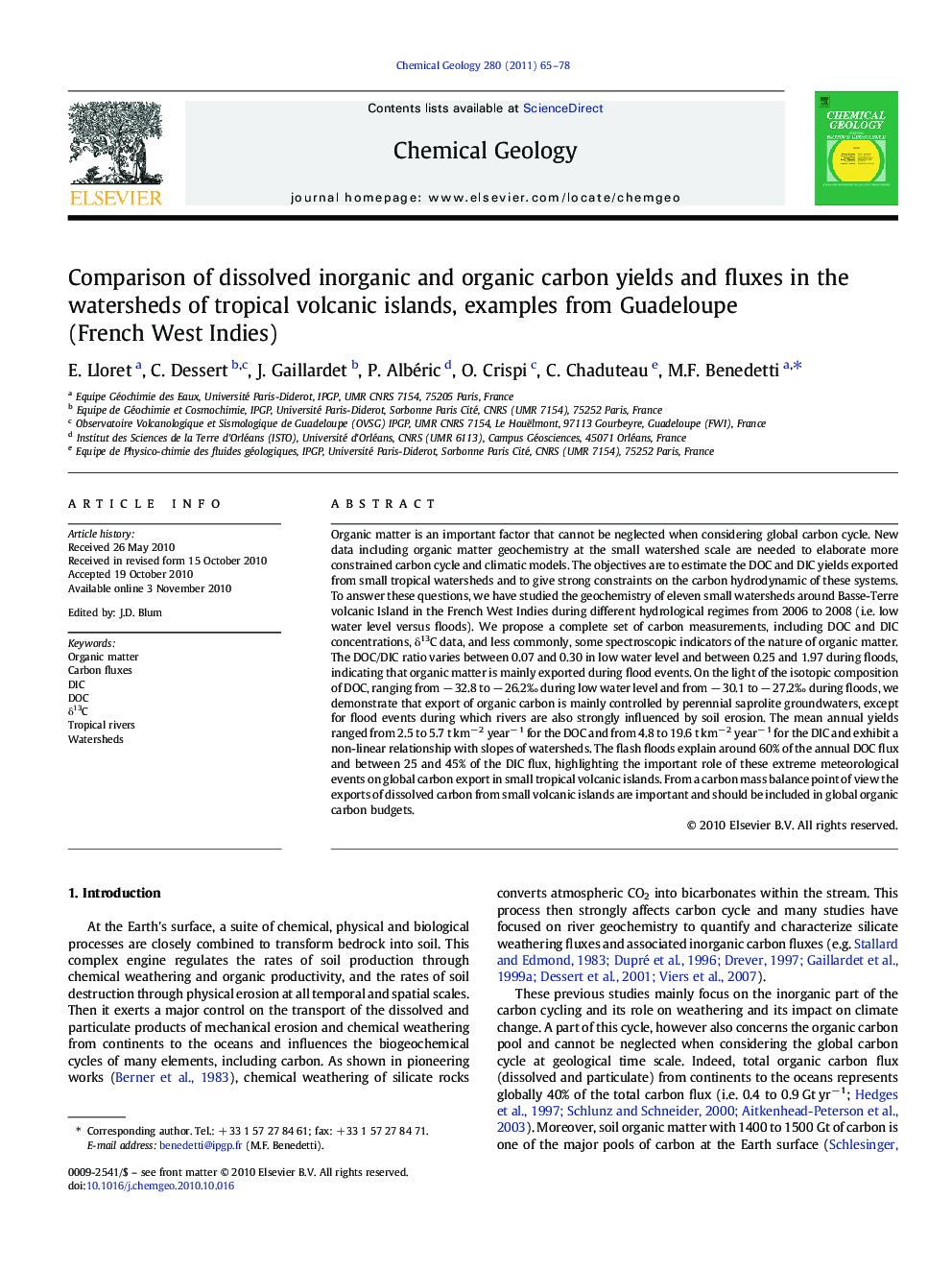| Article ID | Journal | Published Year | Pages | File Type |
|---|---|---|---|---|
| 4699884 | Chemical Geology | 2011 | 14 Pages |
Organic matter is an important factor that cannot be neglected when considering global carbon cycle. New data including organic matter geochemistry at the small watershed scale are needed to elaborate more constrained carbon cycle and climatic models. The objectives are to estimate the DOC and DIC yields exported from small tropical watersheds and to give strong constraints on the carbon hydrodynamic of these systems. To answer these questions, we have studied the geochemistry of eleven small watersheds around Basse-Terre volcanic Island in the French West Indies during different hydrological regimes from 2006 to 2008 (i.e. low water level versus floods). We propose a complete set of carbon measurements, including DOC and DIC concentrations, δ13C data, and less commonly, some spectroscopic indicators of the nature of organic matter. The DOC/DIC ratio varies between 0.07 and 0.30 in low water level and between 0.25 and 1.97 during floods, indicating that organic matter is mainly exported during flood events. On the light of the isotopic composition of DOC, ranging from − 32.8 to − 26.2‰ during low water level and from − 30.1 to − 27.2‰ during floods, we demonstrate that export of organic carbon is mainly controlled by perennial saprolite groundwaters, except for flood events during which rivers are also strongly influenced by soil erosion. The mean annual yields ranged from 2.5 to 5.7 t km− 2 year− 1 for the DOC and from 4.8 to 19.6 t km− 2 year− 1 for the DIC and exhibit a non-linear relationship with slopes of watersheds. The flash floods explain around 60% of the annual DOC flux and between 25 and 45% of the DIC flux, highlighting the important role of these extreme meteorological events on global carbon export in small tropical volcanic islands. From a carbon mass balance point of view the exports of dissolved carbon from small volcanic islands are important and should be included in global organic carbon budgets.
Research Highlights► Source of DOC is mainly controlled by saprolite groundwaters, except for flood events. ► The mean annual yields exhibit a non-linear relationship with slopes of watersheds. ► The flash floods account for 60% of the annual DOC flux and 40% of the DIC flux. ► The DOC input of small volcanic islands is similar to the Amazon flux to the ocean.
